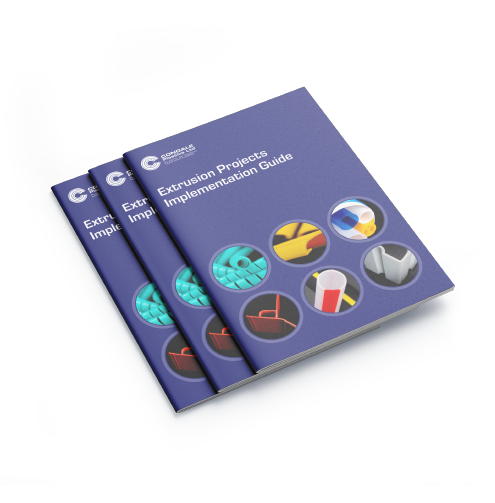Our experience manufacturing plastic extrusions has taught us that taking the time to consider the intricacies of extrusion design in the early stages of a project always achieves the best results.
A well-designed plastic extrusion will ensure cost-effective tooling, avoid production issues and reduce lead times from inception to delivery – so, a little forethought can go a long way.
To help customers achieve good quality rigid profiles we advise them to consider the following 10 points before embarking on a new extrusion design.
1. Regular wall thickness
Always try to achieve an even wall thickness in your extrusion design. Variations in thickness can make the flow of plastic material through the tool difficult to regulate, causing cooling at different rates and distorting the finished profile. Irregular extrusion wall thicknesses can also lead to difficulties in manufacturing and increased production costs.
2. Limit detail in hollow profiles
As thermoplastic extrusion is a continuous process, internal definition in hollow sections is difficult to achieve as there is no way of getting inside the hollow to hold detail in place during the calibration (forming) process. Complex detail can only be achieved by opening up the profile.
3. Avoid hollows in hollows
A hollow within another hollow cannot be held in position so will inevitably force the intended design out of shape before the thermoplastic solidifies.
4. Provide good access for internal detail
If the extrusion design has an opening, legs, grooves, snap-in features and other details can be incorporated internally.
5. Length tolerances
Where possible design a little tolerance into your required extrusion length. Thermoplastics contract and expand with temperature and cutting plastic profiles to a very critical length may add unnecessarily to cost. Typically on a profile of 1,000mm length a tolerance of +/- 3mm is achievable. Naturally the tolerances achievable will be smaller for shorter lengths and vice versa for longer ones. Extrusions requiring very tight tolerances are generally cut out of line, incurring higher processing and handling costs.
6. Mating parts
Custom plastic profiles often need to fit another component. Providing a sample of the mating part will facilitate the tool design stage and ensure an accurate fit when trialling the plastic profile.
7. Clear plastic profiles
A clear finish can be achieved with several materials to varying degrees of clarity. Clear rigid PVC is generally the cheapest material, but will not produce a glass clear finish. To obtain optimum clarity, choose PETG or Polycarbonate, depending on your profile design criteria.
8. Flexible profile designs
Generally the same rules apply as rigid plastic profile design except that the process of extruding flexible plastic profiles allows for variable wall thicknesses.
9. Dual density co-extrusion
To achieve a dual hardness co-extrusion with both rigid and flexible properties, two machines are used to feed the separate materials through the same die. Co-extrusion allows for rigid profiles to have flexible lips or flaps or for two rigid profiles to be joined by a flexible hinge.
10. Two colour co-extrusion
It is possible to combine two different colours in the same extrusion, or produce a two colour extrusion with a dominant colour and a stripe in a second colour.
Plastic extrusions can be manufactured in a diverse range of materials, shapes and sizes to suit a wide range of applications from plastic tubes for medical devices to plastic diffusers for LED lighting.
For further tips on plastic extrusion design call us on +44 (0)1342 312714 or complete our enquiry form for a free quote.



